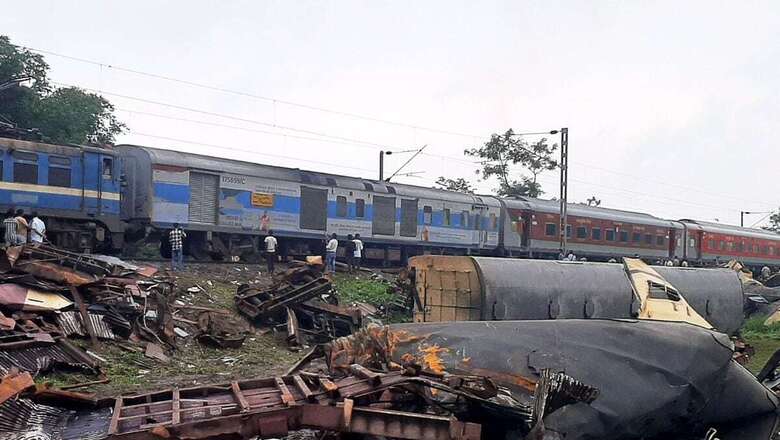
views
The June 17, 2024 collision between a goods train and the 13174 Down Agartala Sealdah Kanchanjunga Express, which occurred between Rangapani and Chattar Hat stations in West Bengal, has exposed significant discrepancies.
- The viability and risk factors of ‘Kavach’ (Train Collision Avoidance System).
- Adherence to railway safety norms in challenging conditions by the appropriate authorities in Indian Railways.
- The awkward and hurried press conference held by the chairperson and CEO of the Railway Board, in which they accused the deceased driver of the goods train of being responsible for the accident and mistakenly declared a living assistant driver of the goods train as dead.
Viability and Risk factors of Kavach
Kavach architecture involves multiple peripherals but primarily works on two components:
- Radio Frequency Identification (RFID) Tag, placed on the sleepers between the tracks.
- RFID Reader, UHF and GPS antennas mounted at the bottom of the locomotive and the roof respectively.
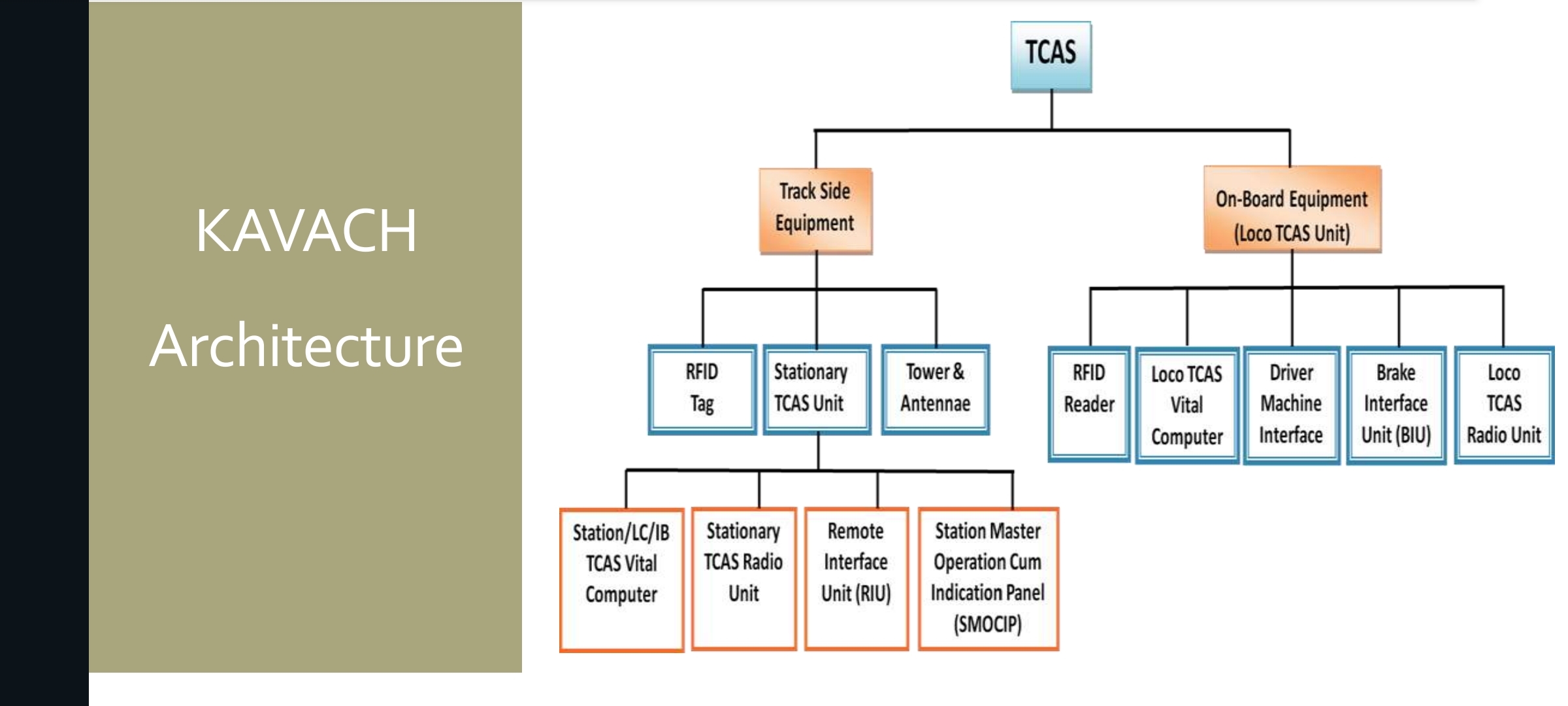
Mechanism of the RFID Tag and RFID Reader
When an RFID Reader-equipped locomotive passes over RFID Tags, the Reader, mounted at the bottom of the locomotive, sends signals to each Tag installed on the sleepers between the tracks. Upon receiving these signals, the Tag’s built-in transponder activates and sends necessary data, including the train’s location, to other locomotives in the vicinity and appropriate control units.
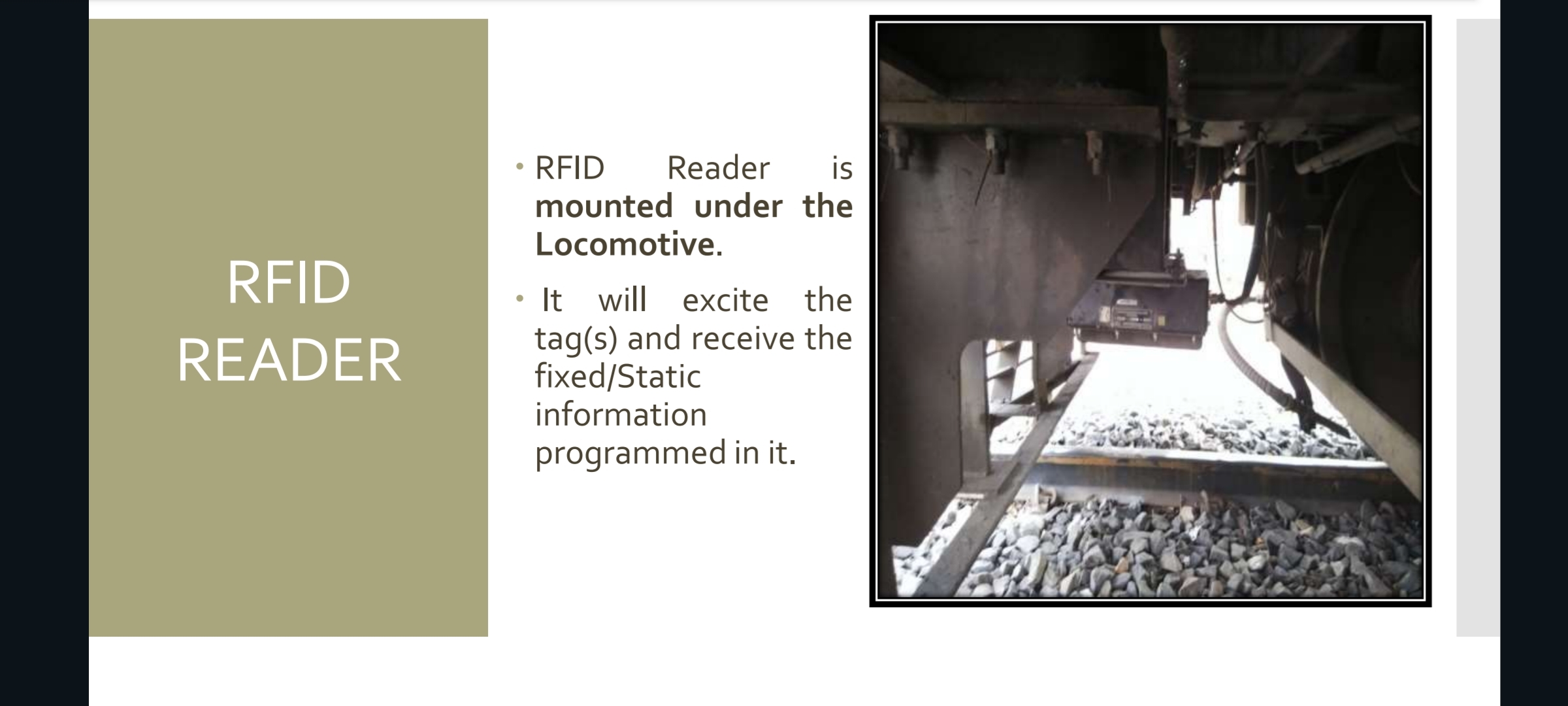
The GPS and UHF antennas mounted on the locomotive’s roof are essential for time synchronisation and data sharing with stations and other locomotives.
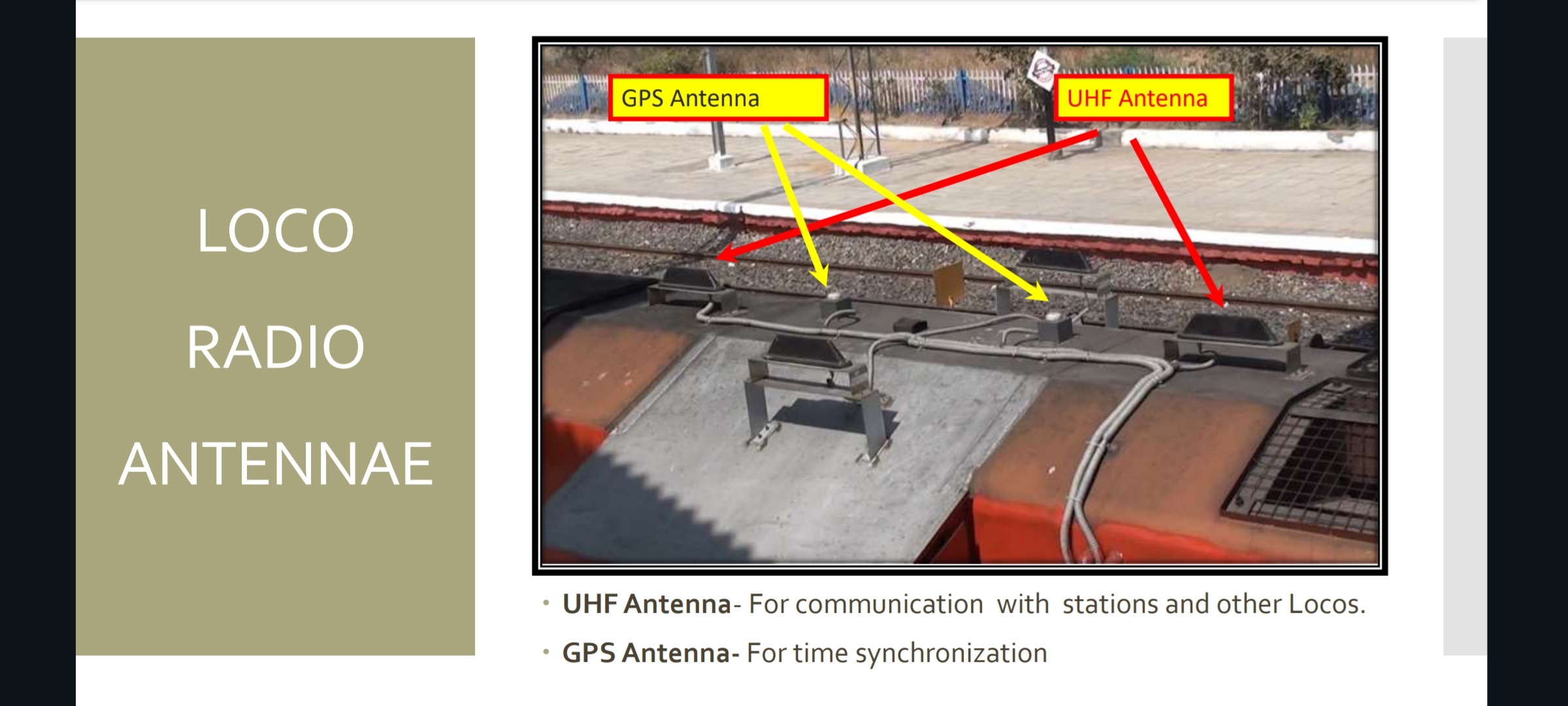
However, both the RFID Reader and Tag face direct sabotage threats, including blasts on the railway tracks and the removal of Tags, particularly on unmonitored tracks spanning almost 68,000 kilometres nationwide. It also faces the unavoidable and extremely high cost of installation, multiple phases of testing, time constraints and the risk of potential agitations of commuters owing to inconvenience caused by the blocking of railway tracks for installation and testing purposes.
RFID Tags are vulnerable to being uprooted or destroyed, while the RFID Readers mounted beneath locomotives can be similarly sabotaged with explosives or manipulated at isolated locations. These locations, many of which serve as regular stops for long-distance superfast trains, are often targeted by those seeking to harm India, both during the day and under the cover of night. Such locations are easily monitored by these individuals or groups.
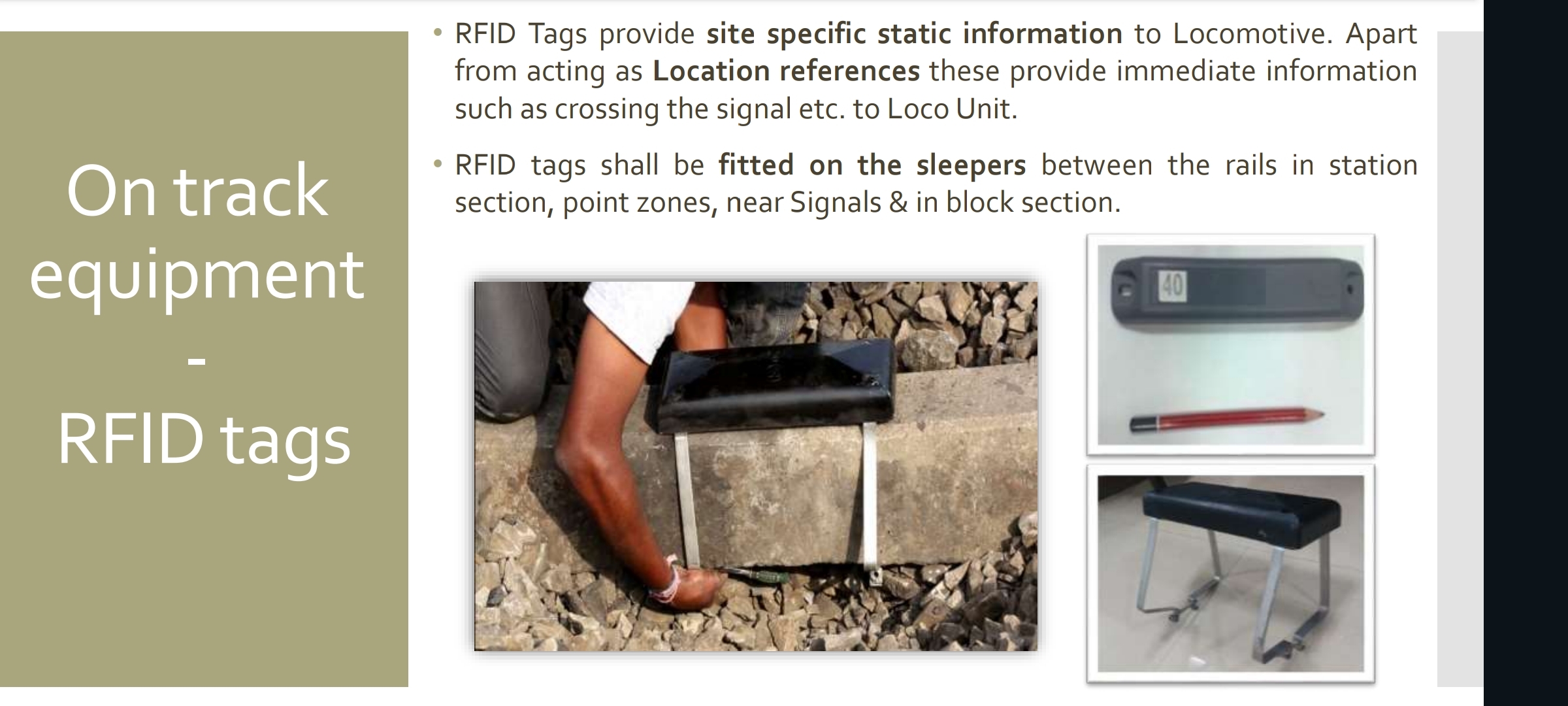
If RFID Tags are sabotaged, the system’s functionality is severely compromised. Since Kavach relies on the RFID Reader activating the Tag to transmit vital data (speed, location, track identification number), any disruption to the Tags prevents this information from reaching nearby controlling units and other locomotives. This lack of communication means that movement authorities cannot be updated, potentially leading to dangerous scenarios where:
- Two speeding trains are mistakenly directed onto the same track.
- A speeding train encounters a static train on the same track.
- A trailing train collides with a slower-moving or stationary train ahead.
Without accurate data, the automatic braking system would be unable to prevent such accidents.
A more practical alternative technology is ADS-B (Automatic Dependent Surveillance-Broadcast), which eliminates the need for RFID Readers and Tags. The ADS-B OUT system provides continuous updates of GPS locations and ground speeds for all nearby trains to both locomotive drivers and controlling units. This independent data transmission, facilitated by dedicated satellites at one-minute intervals, significantly enhances safety. In fact, ADS-B OUT is already used in airports, enabling air traffic control towers to monitor approved vehicles and prevent accidents.
Regarding the Kanchanjunga Express accident, reports indicate a technical malfunction in the automatic signalling system beginning at 5:50 AM. Consequently, the Rangapani station manager, operating under the Katihar Division of the Northeast Frontier Railway, issued a handwritten memo no. T/A 912.
According to the Indian Railways’ maintenance handbook on Automatic Block Signalling, Automatic Block Working is a system of train working in which movement of the trains is controlled by the automatic stop signals. These signals are operated automatically by the passage of trains through and out of the automatic signalling sections.
The following are the essentials of Automatic Block System:
Where trains are worked on Automatic Block System:
- The line is track-circuited or axle counters are provided throughout its length and divided into a series of automatic signalling sections each of which is governed by an Automatic Stop Signal.
- The movement of trains is controlled by stop signals, which are operated automatically by the passage of train past the signals.
- No Automatic Signal assumes ‘off’ unless the line is clear not only up to the stop signal ahead, but also an adequate distance beyond it.
The adequate distance, which is termed as ‘overlap’, shall not be less than 120 metres unless otherwise directed by approved special instructions. The entire length of the track has to be track circuited or provided with Axle Counters for providing automatic block working and divided into sections, which are called Automatic Signalling Sections.
The automatic signalling section is defined as the portion of the running road between any two consecutive automatic stop signals and each of these sections is protected by an automatic stop signal. These automatic stop signals control the movement of trains into the sections and operate automatically by the passage of the train past the signals.
Automatic stop signals are multiple-aspect colour light signals and are either 3-aspect or 4-aspect as the case may be. There is an attempt to number the automatic signals according to their location with respect to the kilometrage. This requires a code consisting of a group of digits in which the last two digits indicate the telegraph or traction pole and the first group of digits indicate the kilometres at which the signal is located.
The method of numbering helps in the easy identification and location of signals by maintenance staff, in case of failure, without referring to a layout plan. Track circuits are to be numbered according to the automatic signal governing that section.
Procedure during failure of automatic signalling
When a failure of automatic signalling is likely to last for some time or cause serious delay, trains shall be worked from station to station over the section or sections concerned under special instructions.
In the event of failure of all signals occurring in an area consisting of two or more stations worked under the Automatic Block System, the officials of the Signalling & Telecommunication Department shall take immediate steps to inform all concerned, and the following procedure shall be adopted for train passing:
- Before any train is allowed to enter the affected section, it shall be brought to a stand and the driver of the train advised of the circumstances by the station master and the guard of the train advised through a copy of the ‘Authority to Proceed’ TD/912. The controller and the station master of the affected section shall also be informed.
- The station master on duty at the station in the rear of the affected section shall obtain “Line Clear” for the train by one of the following means of communications, viz. (a) inter-cabin/station group telephone, (b) control telephone, (c)VHF sets.
- The station master on duty at the station in advance shall not give such ‘Line Clear’ unless the whole of the last preceding train has arrived complete, the line on which it is intended to receive the incoming train is clear at least 180 metres beyond the place at which the trains usually come to a stand, and all points have been correctly set and all facing points locked for the admission of the train on the said line.
- (a) The driver of the first train entering the affected section on ‘Authority to Proceed’, TD/912 shall proceed with utmost caution and must not run at a speed exceeding 25 kilometres per hour under any circumstances, subject to other speed restrictions in force. (b) After ensuring that the first train has arrived safely at the station ahead of the affected section, the drivers of all subsequent trains shall also proceed with great caution, subject to other speed restrictions in force.
- The Station Master shall give the Driver/Motorman of each train an ‘authority to proceed’ incorporating the speed restriction to be observed. Distinguishing numbers of departures and gate signals required to be passed shall also be indicated on this Authority, authorising the driver/motorman to pass it them.
- Before handing over the ‘Authority to Proceed’, all the points over which the train will pass shall be correctly set and facing points locked. Whenever any power-operated points have to be operated for diverting trains, these must be released and operated locally under the written instructions of the station master on duty.
- When approaching the next station, the driver shall bring his train to a stand outside the first stop signal and sound one long whistle. The station master after checking that all is safe shall arrange for a man in uniform to pilot the train from this signal, who shall obey hand signals, if any, relayed from the station platform.
- Clearance of the section by each train shall be intimated to the station, in the rear under the exchange of private numbers.
- Train signal register shall be brought into use and all entries regarding train working recorded. The controller shall be kept advised of all train movements taking place in the affected section, if possible.
- As soon as signals are put right by a competent authority, the normal working of trains on the Automatic Block System may be resumed, after exchanging messages with private numbers by the station masters concerned, assuring that the section is clear.
- All the records in connection with train working on this system shall be retained at the station and the traffic/transportation inspector of the section must scrutinise them and submit his report to the Divisional Railway Manager/Safety Officer within seven days of the resumption of normal working.
In the event of failure of all signals occurring in an area consisting of two or more stations worked under Automatic Block System and when trains cannot be worked by any of the following means, viz., (a) inter-cabin/station group telephone, (b) control telephone or (c) VHF sets, the following procedure shall be adopted for train passing-
- The movement of trains on the affected section shall be controlled by such stations and on such lines as prescribed by special instructions.
- All the points over which the trains will run within the affected area shall be correctly set and facing points locked before the movement of any train is authorised over them.
- Before any train is allowed to leave the station, it shall be brought to a stand and the driver/motorman and the guard of the train shall be advised of the circumstances by the station master.
- The station master shall give the driver/motorman of each train (a) “Authority to Proceed without Line Clear” on the prescribed form TC/912. The counterfoil shall be retained by the station master and the foil given to the driver. (b) a caution order restricting the speed to 25 kilometres per hour over the straight with a clear view and to 10 kilometres per hour when approaching or passing any portion of the line where the view ahead is not clear due to curve, obstruction, rain, fog, or any other cause. Subject to the observance of other speed restrictions imposed and speed over facing points being restricted to 15 kilometres per hour. (c) An authority on the prescribed form T/A 912 authorising the driver/motorman to pass the automatic signals intervening the two nominated stations at ‘ON’, the semi-automatic signals and manually operated signals on being signalled past by a pointsman or any other railway servant in uniform deputed for the purpose and the gate signals cautiously up to the level crossing where he must ascertain that the gates are locked and the hand signals are displayed by the gateman before he proceeds further. The individual distinguishing number/numbers of each automatic, semi-automatic, manually operated and gate signal/signals shall be indicated on this authority.
- No train shall be allowed to enter an affected section until there is a clear interval of 15 minutes, unless a shorter interval has been prescribed under special instructions.
- (a) In the event of a driver approaching or passing any portion of a line where the view ahead is not clear, the assistant driver or the guard with a hand signal must be sent in advance to guide the further movement of the train. A sharp lookout ahead should be kept and the engine whistle freely used. Further, before entering a section where there are tunnels, the driver shall light the buffer lamps and the electric headlights. (b) A tunnel shall be entered only after it has been ascertained that it is clear. If there is any doubt on this point, the train shall be piloted by a railway employee equipped with a hand signal and detonators.
- The guard shall keep a sharp lookout in the rear and be prepared to exhibit a danger signal to prevent the approach of a train from the rear and to protect it, if necessary. Before entering a section where there are tunnels, he shall also light the side and tail lamps.
- When approaching the next station nominated under special instructions, the driver shall bring his train to a stand outside the first stop signal and sound one long whistle. The station master after seeing that all points have been correctly set and facing points locked, shall arrange for a man in uniform, to pilot the train from this signal who shall obey hand signals, if any, relayed from the station platform.
- The drivers of all trains shall make over the ‘Authority to proceed without Line Clear’ to the station master of the nominated station at the end of the section. These shall be kept by the station master in his personal custody for inspection by the traffic/transportation inspector of the section, who shall prepare a report on the working of trains and forward the same along with his report to the Divisional Railway Manager/Safety Officer within 7 days of resumption of communication.
- A record of all trains passed over the affected section on ‘Authority to proceed without Line clear’ during the course of total interruption of communications, shall be maintained in the train signal registers to be opened at all the specially nominated stations.
- Trains must continue to work on this system until either the signals are put right or any one of the means of communication is restored by the competent authority.
- As soon as the signals are put right, the normal working of trains shall be resumed, but where signals continue to remain inoperative and any of the means of communication is restored, the station master shall immediately send a message to the station master at the other end of the affected section.
- Line clear shall not be obtained or given by any means of communication which has been restored until both the station masters are satisfied that all trains and engines etc despatched from their stations have arrived complete at the other station. When the trains arrive complete at the stations, their number and their arrival time will be communicated to the other station master concerned under the exchange of private numbers. Thereafter intimation about this shall be given to the section controller, if possible.
The sequence of events on the day of the accident
- At 0820 hours on June 17, 2024, T/A 912 handwritten memo was issued to the driver of Kanchanjunga Express by the station master of Rangapani station.
- At 0835 hours, a T/A 912 handwritten memo was issued to the driver of the goods train by the station master of Rangapani station. The Rangapani to Nijbari station distance is 8 km and Rangapani to Chattar Hat station distance is 14 km.
- The goods train rammed into the Kolkata-bound Kanchanjunga Express at 0855 hours.
At the time of the collision, Kanchanjunga Express reportedly was in static condition between Nijbari and Chattar Hat stations. The speed limit for both trains was restricted to 10 kmph owing to prevailing rainy weather conditions in the section concerned. At a speed of 10 kmph, Kanchanjunga Express was supposed to cross Nijbari station by 0908 hours. At a speed of 10 kmph, the goods train was supposed to cross Nijbari station by 0923 hours.
Calculation of speed and distance
A train travelling at 10 kilometres per hour covers approximately 0.167 kilometres per minute (10 km / 60 minutes ≈ 0.167 km/minute). Therefore, to travel 8 kilometres at this speed would take approximately 48 minutes (8 km / 0.167 km/minute ≈ 47.9 minutes). This calculation suggests that if both trains had adhered to the speed restrictions outlined in memo T/A 912, the accident could have been avoided.
Intriguing Questions
- What caused the Kanchanjunga Express to wait between Nijbari and Chattar Hat stations at 08:55 hours?
- If the Kanchanjunga Express did pass Nijbari station and waited somewhere between Nijbari and Chattar Hat stations at 08:55 hours, then it must have exceeded the allotted speed limit of 10 kmph.
- The goods train clearly exceeded the 10 kmph speed limit, as it crossed Nijbari station and collided with the Kanchanjunga Express at 08:55 hours, despite being expected to reach the vicinity around 09:23 hours.
- If the automatic signalling system was inoperative, it was imperative for station masters throughout the affected section to maintain communication with each other, train drivers, and guards. Constant updates on train locations and adherence to the speed limit via VHF radio and/or mobile phones were essential in such a risky situation. Was this communication maintained?
- Did all relevant authorities and personnel adhere to proper procedures given the circumstances on that tragic day?
The nation awaits the investigation’s findings, even as it mourns the ten lives lost (at the time of this analysis) and the many injured, adding to the tragic toll of previous rail accidents.
To enhance preventive measures, Indian Railways should establish comprehensive Fire Tender Bases at major junctions, extending 2-3 kilometres on either side. These bases should accommodate at least 20 fire tenders, ample water resources, and state-of-the-art hospitals with 1,500 beds, including ICUs, burn units, trauma care facilities, and 100 critical care ambulances. If space for a parallel road could be arranged for the movement of fire tenders and ambulances, then it must be ensured that the roads are made of concrete and elevated at par with the railway tracks to avoid waterlogging during monsoon or sudden natural calamities. Else, specialised ambulances and fire tenders capable of traversing railway tracks should be deployed. At least one dedicated track should be built for the specially built critical care ambulances to move.
Additionally, the drivers must be provided with satellite phones, CC cameras, and pilot cabin voice recorders, and a black box must be installed in locomotives. Platforms should be designated as security-checked zones, similar to airports, with controlled access for embarking and disembarking passengers following security procedures.
About time the Ministry of Railways learn to value the irreplaceable lives of citizens and tourists from across the globe and stop this relentless march of casualties in Indian Railways by adopting better and alternative technology.
Arya Ghosh is a National Safety, Security, Aviation and Avionics Analyst. Views expressed in the above piece are personal and solely that of the author. They do not necessarily reflect News18’s views.













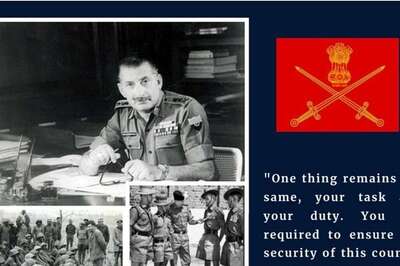






Comments
0 comment